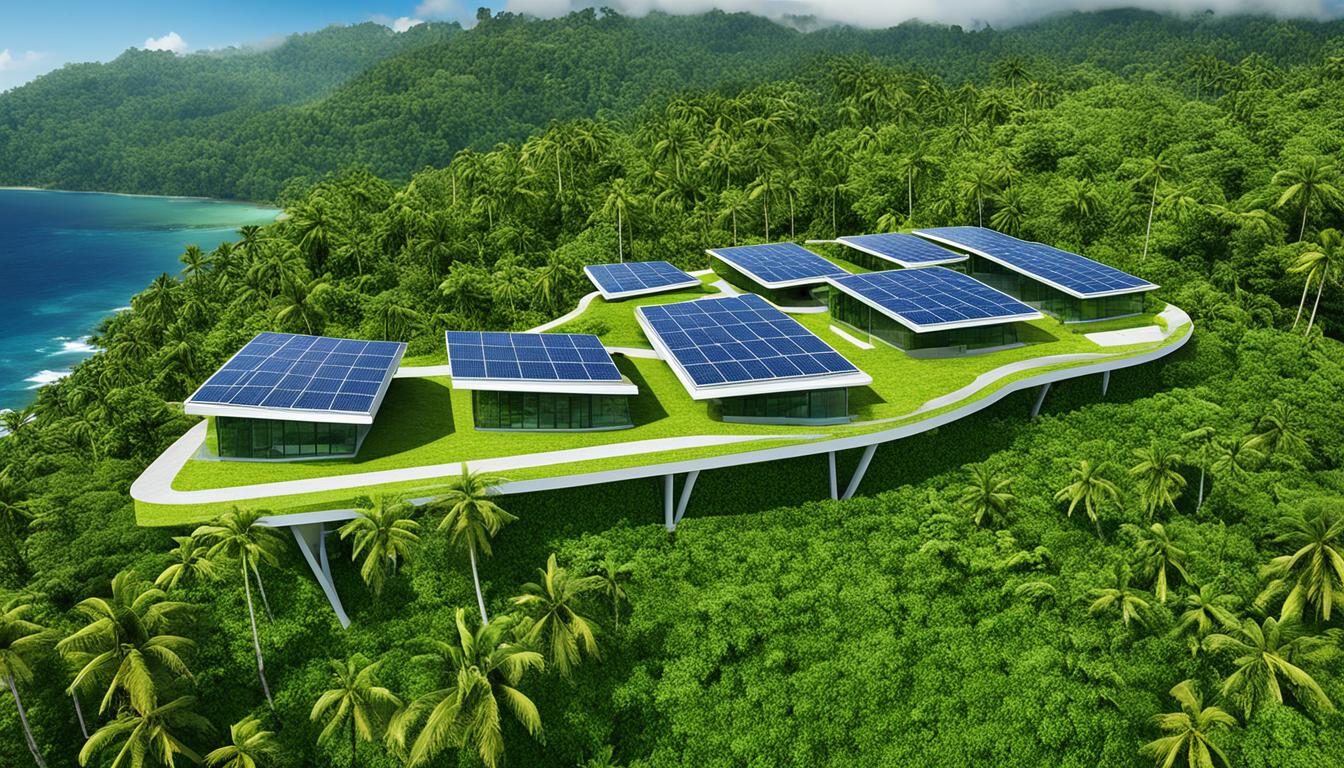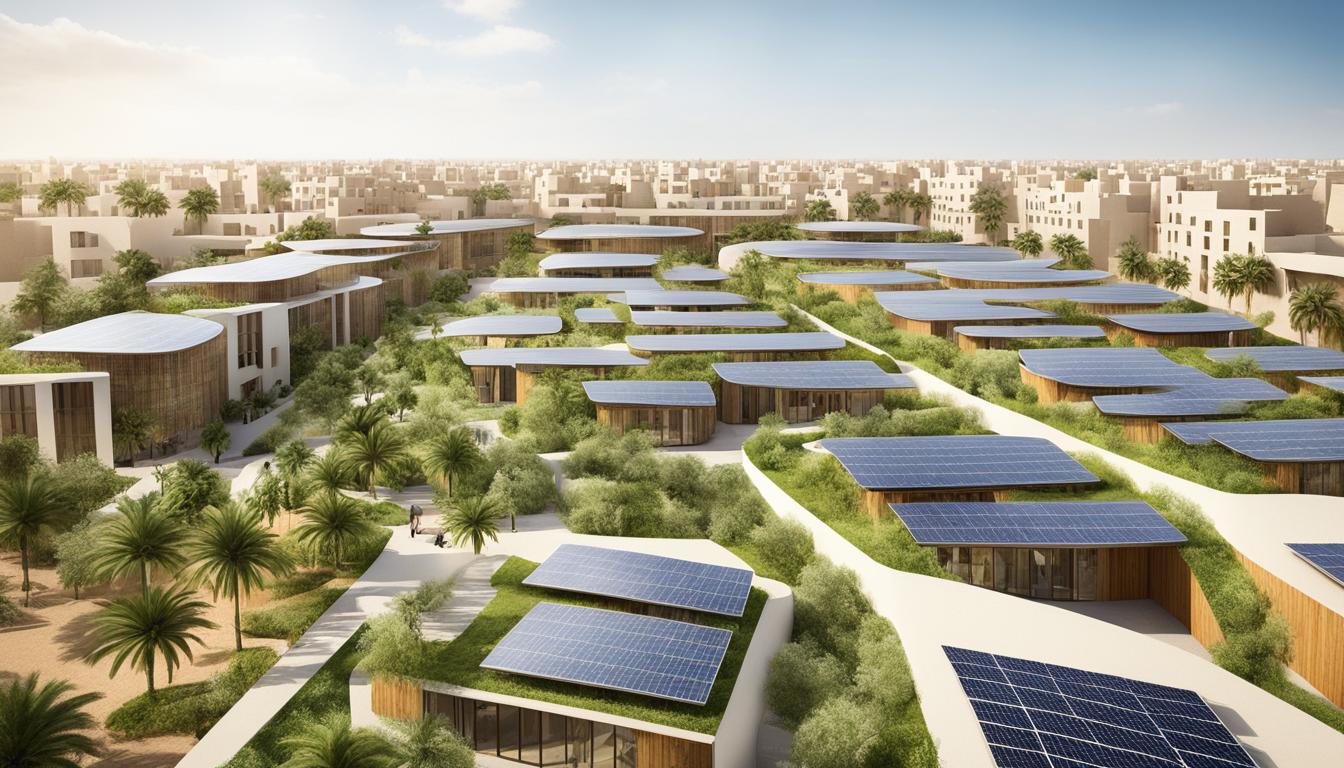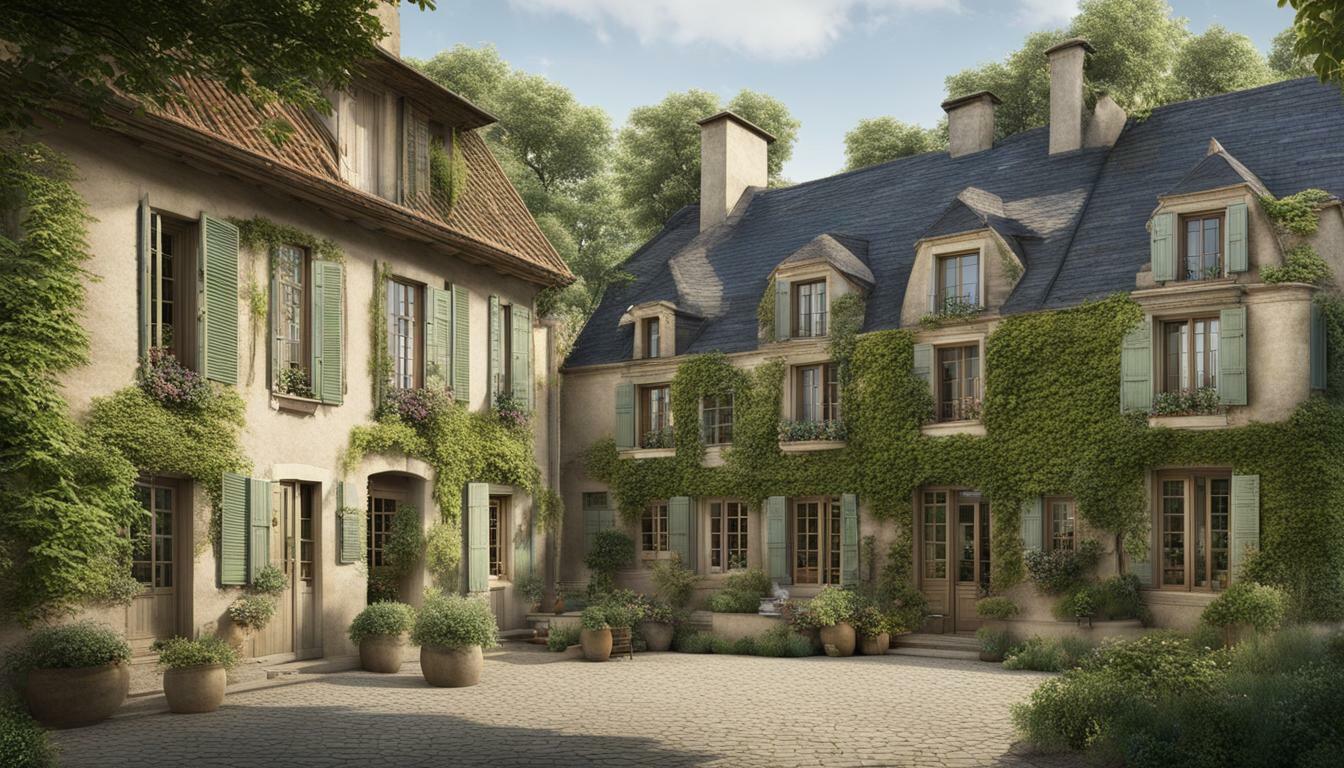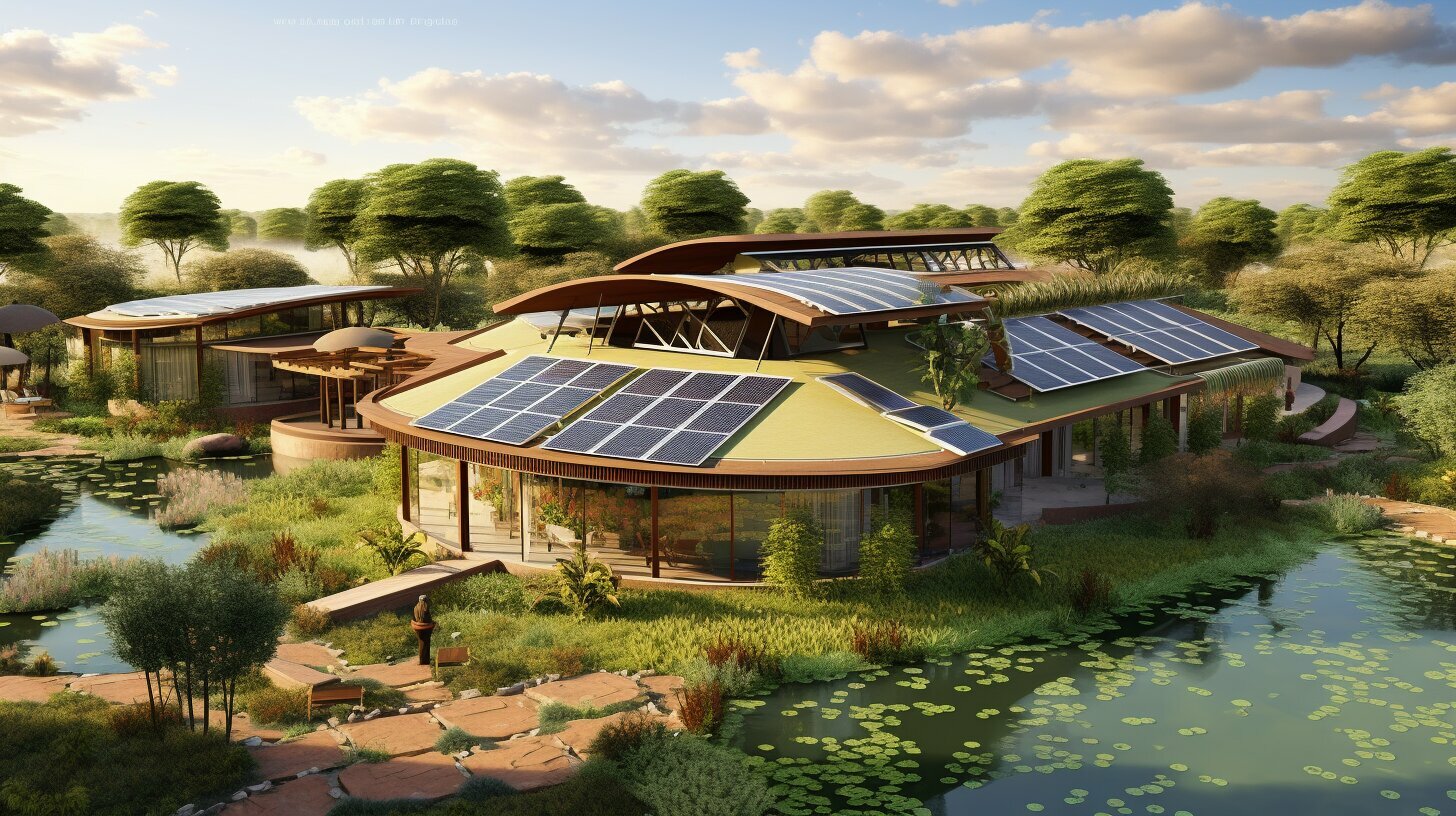Serbia Top Green Buildings
Green construction is a response to climate change challenges, and Serbia is making steady progress in sustainable architecture. With 42 green buildings and a growing trend in other cities, the country is embracing eco-friendly practices. In 2020, Serbia saw a record year with 12 certificates awarded to green buildings.
Key Takeaways:
- Serbia has 42 green buildings, demonstrating a commitment to sustainable architecture.
- 2020 was a standout year, with a record of 12 certificates awarded to green buildings.
- The country is experiencing a growing trend in eco-friendly construction.
Green Building Certification in Serbia
Green building design is an essential component of Serbia’s sustainable construction industry. The country has made significant strides in promoting and implementing environmentally-friendly buildings. One of the key indicators of this progress is the certification of green buildings, which highlights their adherence to sustainable principles and practices.
In 2010, Serbia witnessed its first green building certification under the LEED (Leadership in Energy and Environmental Design) system. This certification marked a significant milestone in the country’s commitment to green construction. Shortly after, in 2013, the “Blue Center” building in Belgrade became the first facility in Serbia to receive certification under the BREEAM (Building Research Establishment Environmental Assessment Method) system.
Presently, Serbia boasts approximately 30 facilities with sustainability certificates, demonstrating the growing awareness and adoption of green building practices. These certifications validate that these buildings have been designed and constructed to minimize their environmental impact, optimize energy efficiency, and provide healthier indoor environments for occupants.
“Green building certification in Serbia reflects a positive shift towards sustainable and energy-efficient construction practices. It sets a benchmark for developers and stakeholders to prioritize environmental stewardship in their projects.” – Sustainable Architect Magazine
By incorporating green building strategies, Serbia is able to enhance its urban landscape while contributing to the global effort to combat climate change. The focus on green building design ensures the efficient use of resources, reduces carbon emissions, and improves the overall quality of life for its citizens.
| Certification System | Year of First Certification |
|---|---|
| LEED | 2010 |
| BREEAM | 2013 |
| Other | – |
Table: Green Building Certification Systems in Serbia
These certifications serve as tangible proof of Serbia’s commitment to sustainable construction and provide a framework for the future development of eco-friendly buildings. The continued growth of green building design in Serbia will contribute significantly to the country’s overall sustainability goals and create a healthier and more resilient environment for future generations.
Sources:
- Sustainable Architect Magazine
Challenges and Indicators of Green Building in Serbia
Although there is a growing awareness of the importance of green building in Serbia, the application of green building principles is still not at a satisfactory level. The country faces several challenges in this regard, including the limited number of projects with energy passports and the scarcity of facilities with sustainability certificates. Let’s take a closer look at these indicators:
Number of Projects with Energy Passports
Currently, there are only about 5,000 new projects in Serbia that have energy passports. An energy passport provides valuable information about a building’s energy efficiency, helping owners and tenants make informed decisions about its sustainability. This low number indicates the need for greater emphasis on energy efficiency in the construction industry.
Lack of Facilities with Sustainability Certificates
While there is a growing interest in green building, the number of facilities with sustainability certificates remains relatively low in Serbia. These certificates validate a building’s adherence to green building standards and practices. The scarcity of certified buildings indicates the need for increased efforts to promote sustainable construction and incentivize the adoption of green building measures.
Localization of Positive Green Building Projects
Another challenge that Serbia faces in the field of green building is the localization of positive green building projects. While there are some notable examples of green architecture in the country, there is a need for more widespread adoption of sustainable practices across various regions. Efforts should be made to inspire and support green building initiatives throughout Serbia.
In order to overcome these challenges, it is essential to focus on promoting green architecture and green building materials in Serbia. By raising awareness, providing incentives, and reinforcing regulations, Serbia can enhance its green building industry and create a more sustainable future.
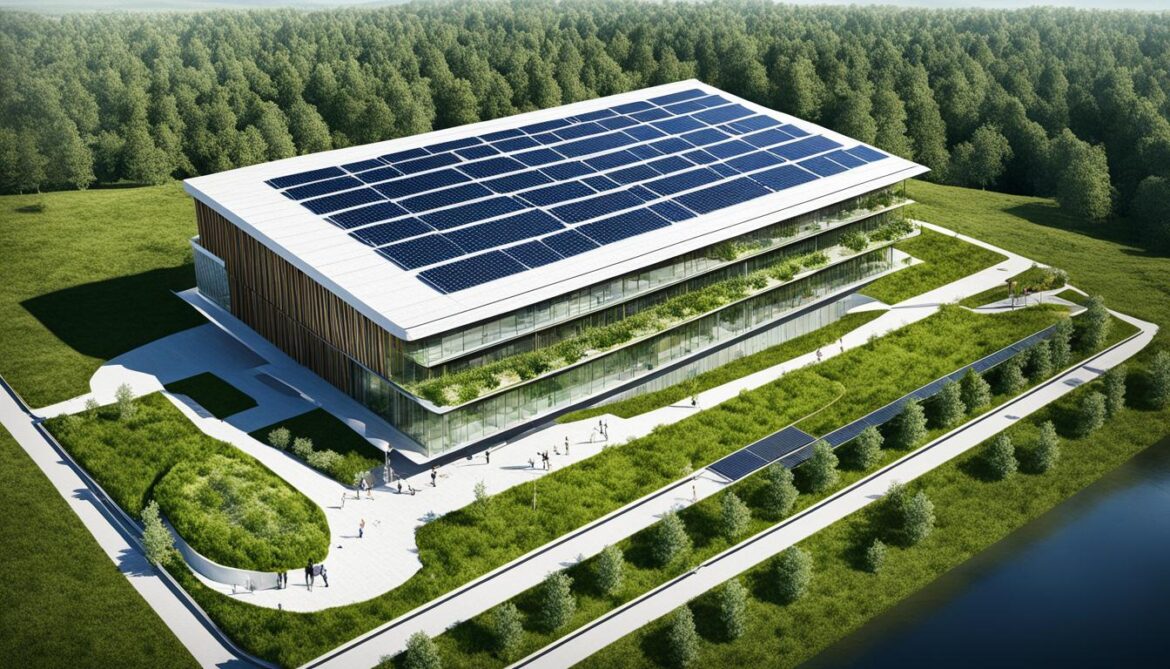
| Challenges | Indicators |
|---|---|
| Number of Projects with Energy Passports | Approximately 5,000 |
| Lack of Facilities with Sustainability Certificates | Few certified buildings |
| Localization of Positive Green Building Projects | Limited adoption across regions |
The Role of Education and Awareness in Green Building
Efforts to promote environmentally friendly architecture and Serbia green construction are actively underway through education and raising awareness. As more individuals become aware of the importance of sustainable practices, there is a growing interest among students in energy-efficient and green architecture.
By educating the younger generation about the benefits of green building, we can inspire future architects, engineers, and construction professionals to incorporate sustainable design principles into their work. This will pave the way for a more environmentally conscious and responsible construction industry.
“Education is the most powerful weapon which you can use to change the world.” – Nelson Mandela
However, despite increasing awareness and interest, the implementation of green building practices in real-life projects is still limited. There are several challenges that hinder the adoption of sustainable construction techniques, such as a lack of knowledge, limited resources, and resistance to change.
To overcome these obstacles, it is crucial to provide comprehensive education and training programs that focus on environmentally friendly architecture and Serbia green construction. By equipping professionals with the necessary knowledge and skills, we can bridge the gap between theoretical understanding and practical application.
Furthermore, raising awareness among the general public about the positive impact of green buildings can also play a significant role. Through campaigns, workshops, and community engagement, we can encourage individuals to make sustainable choices when it comes to their homes, workplaces, and the buildings they frequent.
Ultimately, education and awareness are key drivers in advancing green building practices in Serbia. By nurturing a culture that prioritizes sustainability and equipping individuals with the necessary knowledge and skills, we can create a greener and more sustainable future for our country.
Key Points:
- Education and awareness are essential in promoting environmentally friendly architecture and Serbia green construction.
- There is a growing interest among students in energy-efficient and green architecture.
- The implementation of green building practices in real-life projects is still limited.
- Comprehensive education and training programs can bridge the gap between theoretical understanding and practical application.
- Raising awareness among the general public is crucial to encourage sustainable choices.
By focusing on education and awareness, we can drive the adoption of sustainable practices and create a more environmentally conscious construction industry in Serbia.
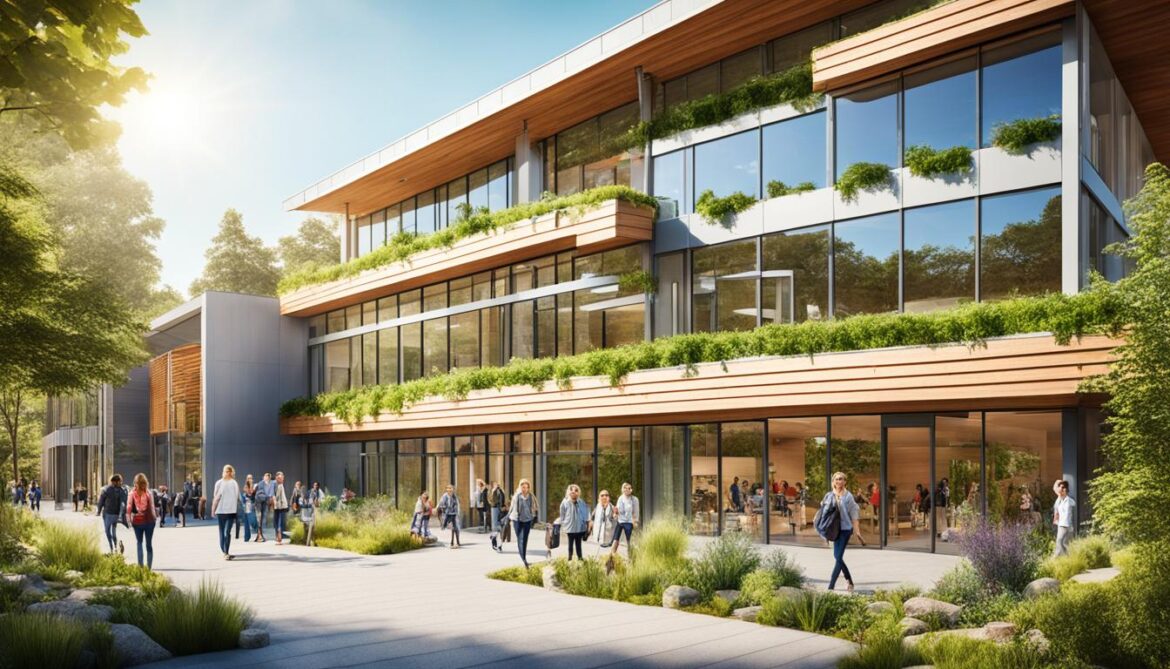
The Importance of Regulations and Incentives for Green Building
To make the construction sector in Serbia more sustainable, it is crucial to prioritize the application of regulations and incentives by the state. These measures can play a significant role in encouraging the adoption of energy-efficient buildings and green building solutions.
Regulations serve as a framework for promoting sustainable construction practices. By implementing specific guidelines and standards, the government can ensure that new buildings adhere to energy-saving principles, utilize green materials, and minimize environmental impact.
Implementing regulations for energy-efficient buildings in Serbia is a key step towards achieving a sustainable future. It not only reduces carbon emissions but also creates healthier and more comfortable living spaces for residents.
Incentives, on the other hand, can motivate developers and building owners to invest in green building solutions. Financial benefits such as tax credits, grants, and subsidies encourage the adoption of sustainable practices by offsetting initial costs and providing long-term savings.
By offering rewards and recognitions for green building certifications, the state can further incentivize stakeholders to prioritize sustainable construction. This can have a significant impact on raising awareness and driving the market towards environmentally friendly and energy-efficient buildings.
The Role of Government Support
Government support plays a vital role in promoting green building solutions in Serbia. It can foster partnerships between the public and private sectors, establish funding programs, and engage in educational initiatives.
Through effective regulations and incentives, the government can ensure that sustainable practices become standard in the construction industry. This will not only benefit the environment but also contribute to the overall well-being of communities by creating healthier and more sustainable living environments.
| Benefits of Regulations and Incentives for Green Building | Examples |
|---|---|
| Promotes energy efficiency and reduces environmental impact | Implementing mandatory energy performance standards |
| Encourages the use of renewable energy sources | Providing financial incentives for the installation of solar panels |
| Supports the development of green building technologies and innovations | Allocating research grants for sustainable construction practices |
| Attracts investments and boosts the economy | Offering tax incentives for green building projects |
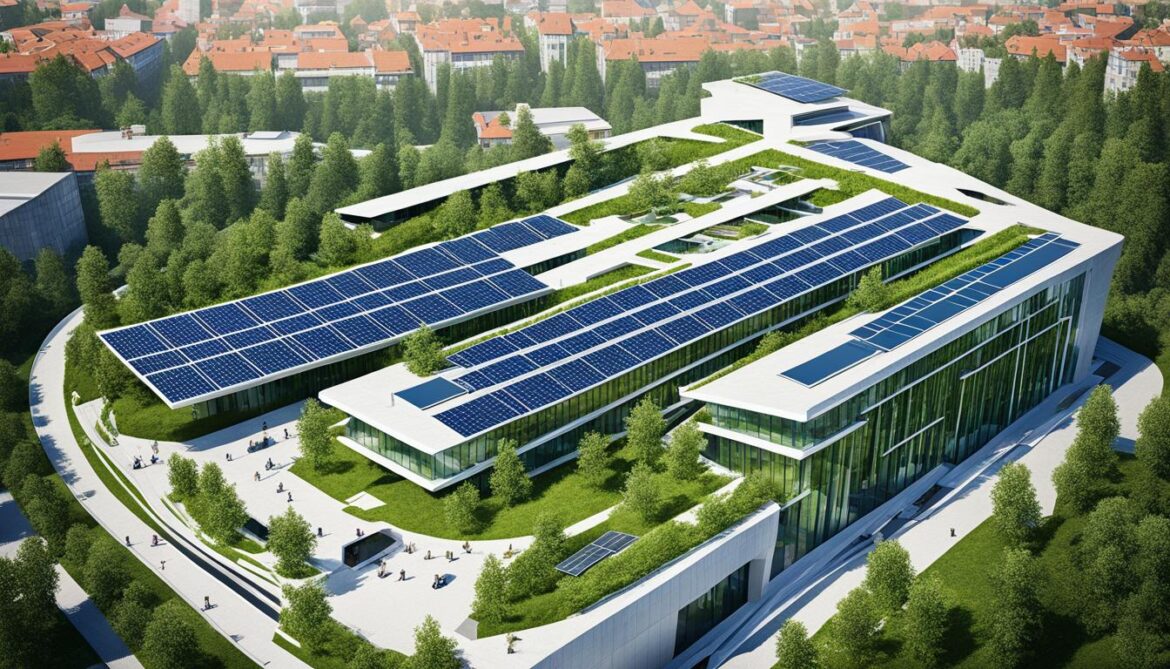
By prioritizing regulations and incentives for green building, Serbia can accelerate its transition towards a more sustainable and environmentally conscious future. This will not only contribute to reducing carbon emissions but also position the country as a leader in green construction practices.
Sustainable Materials and Energy Efficiency
Green building companies in Serbia prioritize sustainability by carefully selecting eco-friendly materials and actively striving to reduce unnecessary packaging waste. These conscious choices contribute to the overall goal of creating environmentally responsible structures within the country’s construction industry.
One notable industry leader in Serbia’s green construction sector is KONE. As a prominent provider of elevator and escalator solutions, KONE offers energy-efficient products that align with the principles of sustainable building. By incorporating KONE’s solutions, green buildings can further enhance their energy efficiency and reduce their environmental impact.
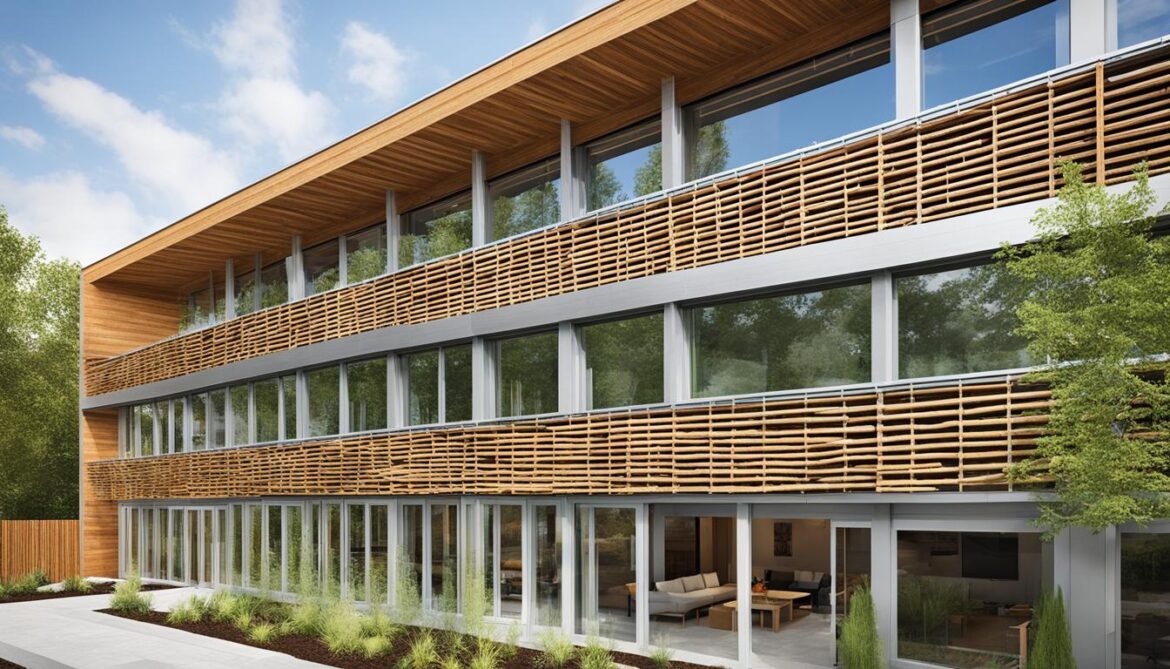
Additionally, KONE supports green building certifications, such as LEED and BREEAM, by providing products and services that contribute to the fulfillment of certification requirements. This commitment to sustainability reinforces KONE’s role as a key partner in Serbia’s green building development.
By incorporating sustainable materials and energy-efficient solutions into the construction process, Serbia’s green building companies and industry leaders like KONE are paving the way for an environmentally conscious future.
The Role of KONE in Green Building Development
KONE, a renowned leader in the elevator and escalator industry, plays a crucial role in promoting sustainable architecture and eco-friendly innovations in construction in Serbia. The company is committed to helping customers obtain green building certifications, such as LEED and BREEAM.
One of the ways KONE contributes to green building is through offering energy-efficient solutions. Their A-class elevators and A+++ escalators are designed to minimize energy consumption and reduce the environmental impact of buildings. By incorporating these solutions into their projects, architects and developers can enhance the sustainability of structures while providing efficient vertical transportation.
KONE understands the significance of using environmentally friendly materials in construction. Therefore, they prioritize the use of green and renewable materials in their products. By doing so, KONE encourages the adoption of sustainable practices throughout the construction industry in Serbia.
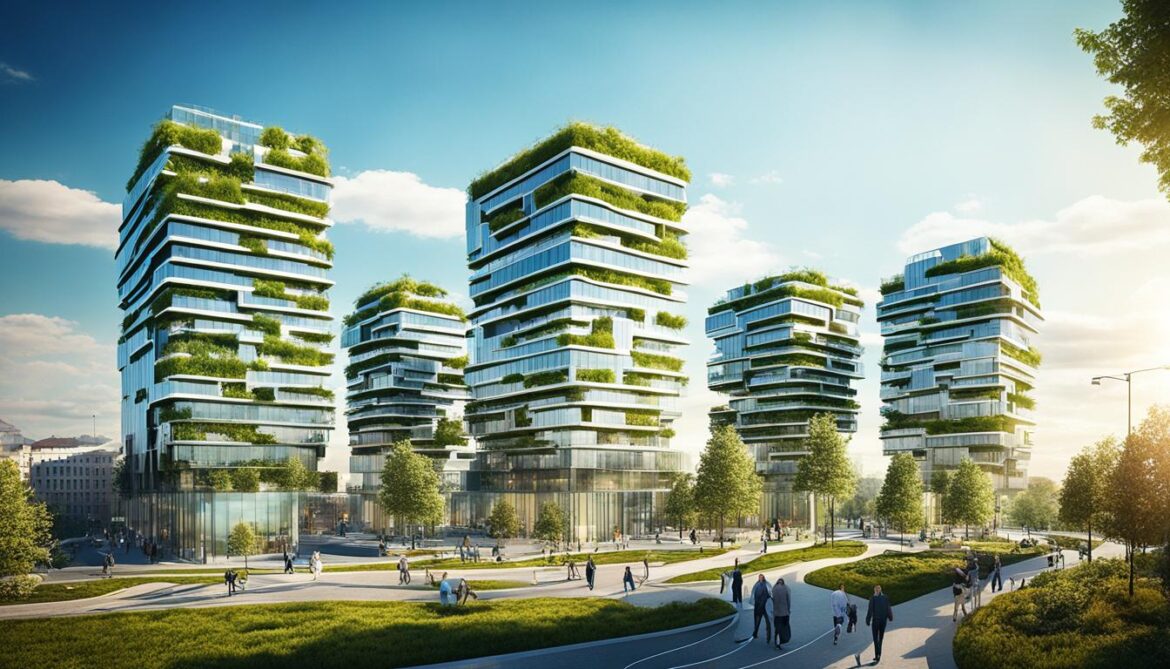
KONE Green Building Solutions
| Solution | Description |
|---|---|
| A-class Elevators | Energy-efficient elevators that reduce energy consumption and enhance sustainable transportation in buildings. |
| A+++ Escalators | Highly energy-efficient escalators designed to minimize power usage and contribute to greener buildings. |
| Green and Renewable Materials | KONE prioritizes the use of environmentally friendly and renewable materials in their products to support sustainable construction practices. |
The Benefits of Green Building
Green building practices offer numerous benefits that contribute to a more sustainable future for Serbia. By prioritizing eco-friendly construction techniques and materials, these projects help reduce environmental impact and create healthier living environments. Let’s explore some of the key advantages of green building:
Improved Energy Efficiency
Green buildings are designed to be highly energy-efficient, incorporating advanced insulation, efficient HVAC systems, and the use of renewable energy sources such as solar panels. By reducing energy consumption, these structures help lower utility bills and decrease reliance on fossil fuels.
Reduced Environmental Impact
Green construction focuses on minimizing negative environmental effects throughout the building lifecycle. From the selection of sustainable materials to waste reduction strategies, every aspect is carefully considered. By reducing greenhouse gas emissions, water consumption, and waste generation, green buildings help mitigate climate change and protect natural resources.
Healthier Living Environments
Green buildings prioritize indoor environmental quality, promoting better health and well-being for occupants. They incorporate features like improved ventilation, ample natural light, and the use of non-toxic building materials. These factors contribute to better air quality, reducing the risk of respiratory illnesses and enhancing overall comfort.
Cost Savings
While upfront costs for green building construction may be slightly higher, the long-term savings are significant. Energy-efficient designs and technologies lead to reduced operational expenses, resulting in lower energy bills and maintenance costs over time. Additionally, implementing sustainable practices can attract tax incentives and rebates, further enhancing cost savings.
Contribution to City Sustainability
Green buildings play a crucial role in creating sustainable cities. By reducing energy demand, minimizing waste, and improving environmental quality, these structures contribute to the overall sustainability of urban areas. They serve as models for future development, inspiring others to adopt green building practices and create a greener, more livable environment for all.
By embracing green building principles, Serbia can pave the way for a more sustainable future. The benefits of eco-friendly construction extend far beyond individual buildings, positively impacting the environment, economy, and quality of life for its citizens.
Conclusion
In Serbia, the green building movement is gaining significant traction. With an increasing number of certified buildings and a growing interest in sustainable architecture, the country is making strides towards a more eco-friendly future.
However, there is still work to be done. Continued efforts in education, regulation, and incentives are crucial to further promote the adoption of green building practices in Serbia. By raising awareness and providing the necessary tools, we can empower architects, developers, and residents to prioritize sustainability in their construction projects.
Green building design offers a multitude of benefits, including improved energy efficiency, reduced environmental impact, and healthier living environments. Additionally, it has the potential to contribute to cost savings and the overall sustainability of cities. By embracing green building practices, Serbia can pave the way for a greener, more sustainable future.



